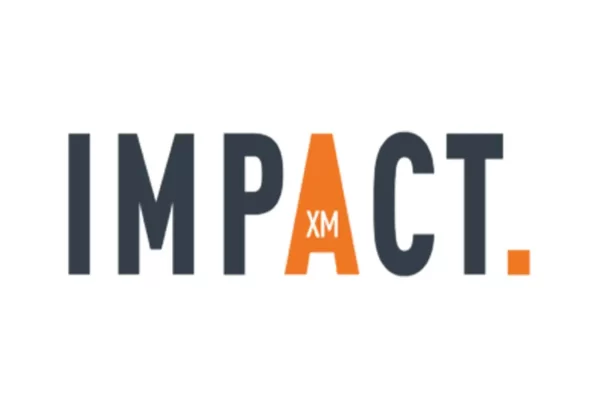by Candy Adams, “The Booth Mom®” DES | VEMM | CTSM | CME | CEM | CMP | CMM
What’s your crystal ball telling you about what live tradeshows will look like when they reopen? It may be spring/summer, but my crystal ball is having weather issues—something between “foggy” and “looks like a snow globe”!
And my next question is, “What will your exhibit program and booth look like at Tradeshows 2.0?”
COVID-19 has given us time—and a clean slate—to rethink our show goals, objectives and processes. But now, we’re back in a compressed exhibit planning cycle and need to look at our options:
Shows to Attend
For starters, what—and how many—shows will your company attend? Will you be resurrecting your standard list of shows in their usual locations, or has your exhibit strategy changed to more regional, vertical, smaller or fewer shows with more targeted audiences, less travel and lower costs?
And how long before the show(s) will you make the decision to exhibit? Show managers know that decision-making cycles are lots shorter, with exhibitors waiting until the last minute to commit to exhibiting because of the potential of cancellation and negative financial ramifications.
Budgets and Costs
No matter how good you are at budgeting, the next year is going to be challenging. If you’re like most exhibitors, your 2020/2021 show budgets were reallocated to other marketing and sales channels to keep leads and revenue flowing.
Some of the new show costs you may be guess-timating include:
- Renting larger space to accommodate the same number of staff and visitors due to spatial/ social/physical distancing
- Exhibit reconfiguration to maximize open space and add health/safety features
- Higher staff travel costs due to rising airfare, lodging and per diem expenses
- New cleaning/sanitation/disinfection costs
- Personal protective equipment for staff and visitors
- Additional pass-through costs for health, safety and security personnel to monitor attendee temperatures and health questionnaires and enforce masking/distancing
Beware of “Gotchas”
So what’s the biggest “gotcha” exhibitors need to watch out for? Beware of asterisks (*)! Everything about shows will “*SUBJECT TO CHANGE”—from the show prospectus to signing a “flexible” contract with new cancellation/ postponement clauses and terms and conditions. Plan on spending extra time to sift through the exhibitor kit for new rules, regulations and updates.
Rules and Regs
There is currently no umbrella of cohesive federal-level regulations that covers all U.S. show venues. Every venue/facility jurisdiction is different and will have different players involved in making—and enforcing—policies. These may include state regulators, city managers, local health and safety agencies, convention venues and their fire marshals and facility engineers, disinfection and infectious disease prevention certifications (like Global Biorisk Advisory Council—GBAC), along with show management, the general services contractor and subcontractors.
Some rules may change, too, depending on whether they apply during set-up and dismantle, during actual show hours and whether you’re exhibiting inside a venue or in an outdoor area.
Outside of the show’s rules and regulations, don’t forget to consider the corporate risk management, travel and duty of care issues for your own exhibit staff.
Event Staffing
If the shows you sign up for are hybrid, you’ll need to consider increasing staffing levels to manage the simultaneous virtual event. Consider what activities will you be participating in during the virtual event that require additional staff: presenting live sessions, sitting on panels, moderating chat rooms or holding networking events.
Another issue to consider is the number of exhibit staff required to accommodate spatial distancing. Some exhibitors are increasing their booth’s footprint to offer a less confined, more open-feeling exhibit, while other exhibitors are planning smaller exhibits with less exhibit property and furnishings with fewer staff. Before making these decisions, you may want to check in with show management to estimate attendance and find out if they will be controlling the number of attendees on the show floor at any given time by selling a limited number of entrance tickets or for specific days/times.
Exhibit Staff Training
With so many exhibiting changes, you’ll want to prepare both your in-booth and virtual exhibit staffs with pre-show training. In additional to the critical “boothmanship 101” training, this may include introducing post-lockdown corporate travel policies, health and safety policies and orientation to your new exhibit space.
Show Floor Differences
Based on exhibitors’ budget cuts, many shows are moving to smaller venues in less expensive second-tier cities than their pre-pandemic locations.
When selecting your booth space, keep an eye out for floor plans with directional arrows in the aisles denoting one-way attendee traffic. (Although we’ve all seen this failed concept in grocery stores, some health-agency regulations are still recommending—or mandating—it.) Check the traffic pattern(s) near your booth space for attendee traffic direction and use this information when deciding the orientation your exhibit will face.
The Show Floor of the Future
Other show floor changes will be obvious to show veterans:
Registration: To avoid creating queue lines for badge pick-up, alternatives to on-site registration will be managed either using digital badging, pre-mailing or self-printing badges at home.
Food: You also won’t see the infamous self-serve lunch buffets or pass-around hors d’oeuvres at receptions. These will be replaced by pre-packaged meals, staff serving pre-plated meals and individually-packaged snacks.
Show-floor aisles may be widened for spatial distancing of traffic or divided by marking with tape to look like a painted roadway. But these wider aisles create a conundrum as they can shift exhibits’ placement on the venue’s infrastructure grid of utility/communication floor ports, support columns, catwalks and rigging points. The negatives would be power and internet cables in the aisles causing trip hazards, support columns within booths, and overhead services that aren’t in the right place for hanging signs or overhead power.
And aisles may be carpeted—or not. There’s debate as to whether the cost savings of not laying carpet offsets the loss of attendees’ comfort, cheapens the show image, creates trip hazards by not covering electrical and internet cabling crossing the aisles or slip hazards during mist-based floor disinfection.
Linear Exhibits: Some General Service Contractors are now offering turnkey rental exhibit packages with pre-printed graphics, AV and pre-selected furnishings for the exhibitor who just wants to show up with their laptop to a complete exhibit.
Other shows are transitioning to linear exhibits that allow use of all cubic content—meaning eight-foot walls on three sides of the booth—more like European shell-scheme exhibits rather than the three-foot pony walls on the sides of the linear booth that create line-of-sight.
Physical Exhibit Space
The old rule of thumb was that each exhibit staffer should be allotted 50 square feet of booth space when engaging a visitor to allow sufficient personal space. Now, with The Centers for Disease Control’s six-foot separation criteria for spatial/social distancing, this formula has changed. Depending on how you are computing a six-foot square around a staffer (36 sq. ft.), circle (28.3 sq. ft.) or calculating the area of a circle with a diameter of 12 feet (which is equal to approximately 113 square feet per person), you may need to recalibrate your exhibit staff to your booth size. If you want further info on social distancing, check out: https://www.usfa.fema.gov/coronavirus/planning_response/occupancy_social_distancing.html
Other Exhibit Considerations
– Less exhibit property/more open space
– Carpet vs. laminate flooring
– Hand-sanitizer stations (The CDC recommends using alcohol-based hand sanitizer containing at
least 60 percent ethanol or ethyl alcohol.)
– Disinfection and sanitation
- Fewer furnishings but easily disinfected
- Info counter/reception desk with acrylic shield
- Lead gathering using touchless badges
- Demise of high-touch surfaces like product demos
- Ventilation in enclosed spaces like meeting rooms
- Marketing literature access/fulfillment using QR codes
- Less in-booth hospitality and food/beverage sampling
- Giveaways individually pre-packaged, virtual contest or lottery-style scratch-off ticket
- Security enforcement of show rules, i.e. masking
Vendors and Partners
What’s the status of your tradeshow vendors/partners? Are they still in business? How has/will their business model, policies or pricing change due to the year of pandemic shutdown?
Sanitizing vs. Disinfecting
One “Aha!” moment I had during the pandemic was learning that there’s a big difference between sanitizing and disinfecting. Sanitizing a surface only means that the level of certain bacteria is reduced. Disinfecting means the product destroys or inactivates both the bacteria and viruses noted on the product label. In both cases, the strength and ingredients dictate the contact (a.k.a. dwell) time that’s required for the solution to remain on the surface to be effective, ranging from 30 seconds to several minutes. So read the fine print!
The Good News
I see light at the end of the COVID tunnel:
- Based on the year-long shutdown, we have a pent-up demand for face-to-face events. Exhibitor and attendees want to come back to shows.
- Even though companies may be planning to send fewer attendees, those attending will probably be more qualified than at similar pre-COVID shows.
- Smaller exhibitors who can be more agile with their exhibit planning and staffing may benefit from large exhibitors/competitors not attending because their companies still have travel restrictions in place.
Onward and upward!
 Candy Adams, known throughout the exhibit industry as “The Booth Mom®”, is a hands-on exhibit project manager with seven industry certifications, and a milestone 500 shows under her belt! As an accomplished veteran exhibit marketing consultant and exhibit staff “boothmanship” and exhibit management trainer, she specializes in sharing her knowledge and expertise to guide exhibitors through both the live and virtual tradeshow mazes, assuring they maximize their return on investment while cutting exhibiting costs. A prolific award-winning writer and trainer on exhibiting best practices, she’s published more than 400 articles and blogs and trained tens of thousands of exhibit managers on all aspects of tradeshow exhibit management in her 29-year career. For more info, visit www.BoothMom.com
Candy Adams, known throughout the exhibit industry as “The Booth Mom®”, is a hands-on exhibit project manager with seven industry certifications, and a milestone 500 shows under her belt! As an accomplished veteran exhibit marketing consultant and exhibit staff “boothmanship” and exhibit management trainer, she specializes in sharing her knowledge and expertise to guide exhibitors through both the live and virtual tradeshow mazes, assuring they maximize their return on investment while cutting exhibiting costs. A prolific award-winning writer and trainer on exhibiting best practices, she’s published more than 400 articles and blogs and trained tens of thousands of exhibit managers on all aspects of tradeshow exhibit management in her 29-year career. For more info, visit www.BoothMom.com






















